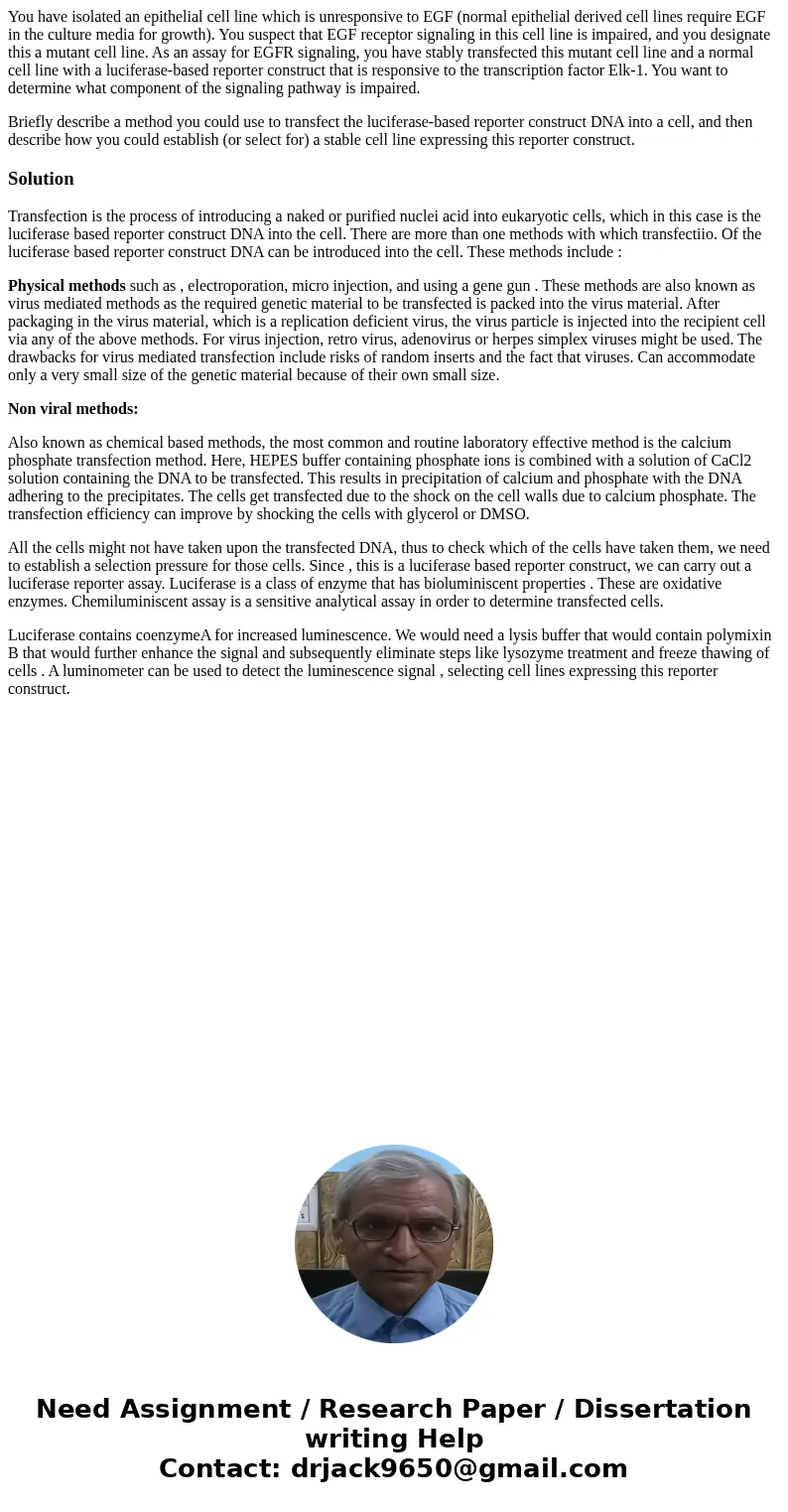You have isolated an epithelial cell line which is unrespons
You have isolated an epithelial cell line which is unresponsive to EGF (normal epithelial derived cell lines require EGF in the culture media for growth). You suspect that EGF receptor signaling in this cell line is impaired, and you designate this a mutant cell line. As an assay for EGFR signaling, you have stably transfected this mutant cell line and a normal cell line with a luciferase-based reporter construct that is responsive to the transcription factor Elk-1. You want to determine what component of the signaling pathway is impaired.
Briefly describe a method you could use to transfect the luciferase-based reporter construct DNA into a cell, and then describe how you could establish (or select for) a stable cell line expressing this reporter construct.
Solution
Transfection is the process of introducing a naked or purified nuclei acid into eukaryotic cells, which in this case is the luciferase based reporter construct DNA into the cell. There are more than one methods with which transfectiio. Of the luciferase based reporter construct DNA can be introduced into the cell. These methods include :
Physical methods such as , electroporation, micro injection, and using a gene gun . These methods are also known as virus mediated methods as the required genetic material to be transfected is packed into the virus material. After packaging in the virus material, which is a replication deficient virus, the virus particle is injected into the recipient cell via any of the above methods. For virus injection, retro virus, adenovirus or herpes simplex viruses might be used. The drawbacks for virus mediated transfection include risks of random inserts and the fact that viruses. Can accommodate only a very small size of the genetic material because of their own small size.
Non viral methods:
Also known as chemical based methods, the most common and routine laboratory effective method is the calcium phosphate transfection method. Here, HEPES buffer containing phosphate ions is combined with a solution of CaCl2 solution containing the DNA to be transfected. This results in precipitation of calcium and phosphate with the DNA adhering to the precipitates. The cells get transfected due to the shock on the cell walls due to calcium phosphate. The transfection efficiency can improve by shocking the cells with glycerol or DMSO.
All the cells might not have taken upon the transfected DNA, thus to check which of the cells have taken them, we need to establish a selection pressure for those cells. Since , this is a luciferase based reporter construct, we can carry out a luciferase reporter assay. Luciferase is a class of enzyme that has bioluminiscent properties . These are oxidative enzymes. Chemiluminiscent assay is a sensitive analytical assay in order to determine transfected cells.
Luciferase contains coenzymeA for increased luminescence. We would need a lysis buffer that would contain polymixin B that would further enhance the signal and subsequently eliminate steps like lysozyme treatment and freeze thawing of cells . A luminometer can be used to detect the luminescence signal , selecting cell lines expressing this reporter construct.

 Homework Sourse
Homework Sourse